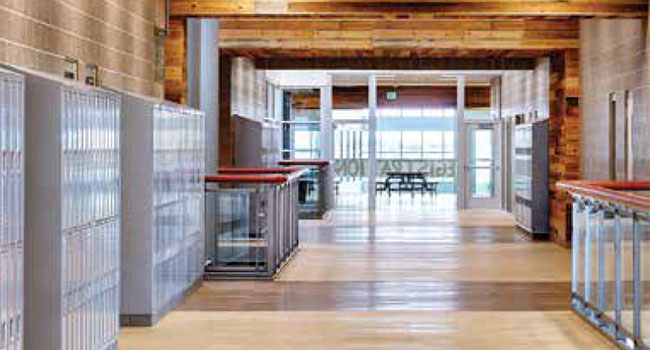
Why, Where and When to Retrofit
How to get the most out of your retrofit experience
- By Benjamin Williams
- August 01, 2018
As the push for connected campuses advances, many
facilities are looking to upgrade their security systems
from mechanical to electronic access control. Electronic
access control has many benefits for healthcare, corporate
and education campuses including managing
high-traffic areas, controlling access to restricted areas and supervising
employee traffic throughout a facility.
Before starting a new retrofit project, facility managers must conduct
a site assessment of existing conditions, which includes identifying
integration and manufacturing partners. These partners will help
the facility managers and security leaders understand the latest code
requirements, the types of solutions needed for the project, and which
products best meet the facility’s budget constraints.
DETERMINE PRIORITIES AND NEEDS
Before an integrator can begin a retrofit project, the facility managers
and security leaders must first determine the goals of the project. Is
there a specific area of the facility that needs a higher security solution
than others? What type of user interfaces will best suit the building and
its occupants? What pain points can the retrofit project address?
It all starts with understanding the business, as a whole, and then
determining what the facility manager and occupant needs. Once the
goals are established, facility managers need to look at the priorities of
each campus then meet and discuss with an integrator ways to strategize
a timely and cost effective plan.
Many campuses, whether it’s healthcare, corporate or education,
must maximize budgets and minimize downtime by creating a plan
that upgrades the security in layers and over a period of time. Campuses
will often initiate upgrades in the highest priority areas, based on
code or overall campus security, and work from there.
Healthcare facilities, for example, will most likely segment specific
areas by security level and priority, then retrofit each one separately.
For example, a hospital may choose to retrofit the Neonatal Intensive
Care Unit (NICU), one of the most heavily guarded and secure units
in a hospital, before moving on to another part of the maternity wing.
This allows the hospital to cost-effectively keep the maternity wing
open, while still upgrading the security in a top priority unit.
Education facilities, on the other hand, look to the overall security
of the campus and typically start with the perimeter of the campus and
work inwards. Schools and universities can maximize budget and minimize
downtown by retrofitting and upgrading facilities during summer
and spring break.
MINIMIZING PAIN POINTS
From a security manufactures’ perspective, there are steps that we can
take when designing or upgrading a product to make it ideal for retrofit
situations.
The most ideal design for a product is to minimize how much customization
integrators have to make to the opening. For example,
when an integrator takes a mechanical strike off the frame to put in an
electric strike, the process should be painless and as simple as taking
the surface mounted mechanical strike from the frame and installing
the appropriate electric strike for the project.
Manufacturers also look at designing products that are made to retrofit
their mechanical product offerings. As new products are designed,
manufacturers can look at their previous offerings, find products that
have a unique cut or hole pattern, and design a new electrical product
that directly retrofits the mechanical offering. This also gives manufacturers
an opportunity to create a more universal installation template
that not only accommodates for past frame or door modifications, but
also prepares the opening for any future adjustments for the long term.
As access control manufacturers, it’s our job to minimize as many
on-site problems as we can by producing products that are built as
durably, reliably and flexibly as possible.
RETROFIT RESOURCES
After a product is designed, on the market and sold for a retrofit project,
manufacturers have many opportunities to provide support and
resources for integrators to avoid any unscheduled downtime.
Downtime during retrofit projects can cause significant shifts in the
time of and cost of the project. If a product needs to be replaced, integrators
must order the new product and wait for its arrival, which can cause
a delay in the project and cause higher costs than originally expected.
When manufacturing partners offer customizable hands-on training
sessions, live-chat or mobile app customer service assistance, integrators
have the resources to find support before and during installation.
Warranty is another critical part of any purchase that shouldn’t be
overlooked. In many cases, warranties offer customer’s peace of mind
knowing that when they’ve invested in a premium solution, there will be
a support team ready to help them in a timely manner if a problem arises.
When upgrading access control, it’s important for facility managers
and security leaders to work with integration and manufacturing partners
they trust. These partnerships give integrators the resources for
every step of the project from code compliance and
product selection through installation and to the
product’s end of life.
This article originally appeared in the August 2018 issue of Campus Security Today.